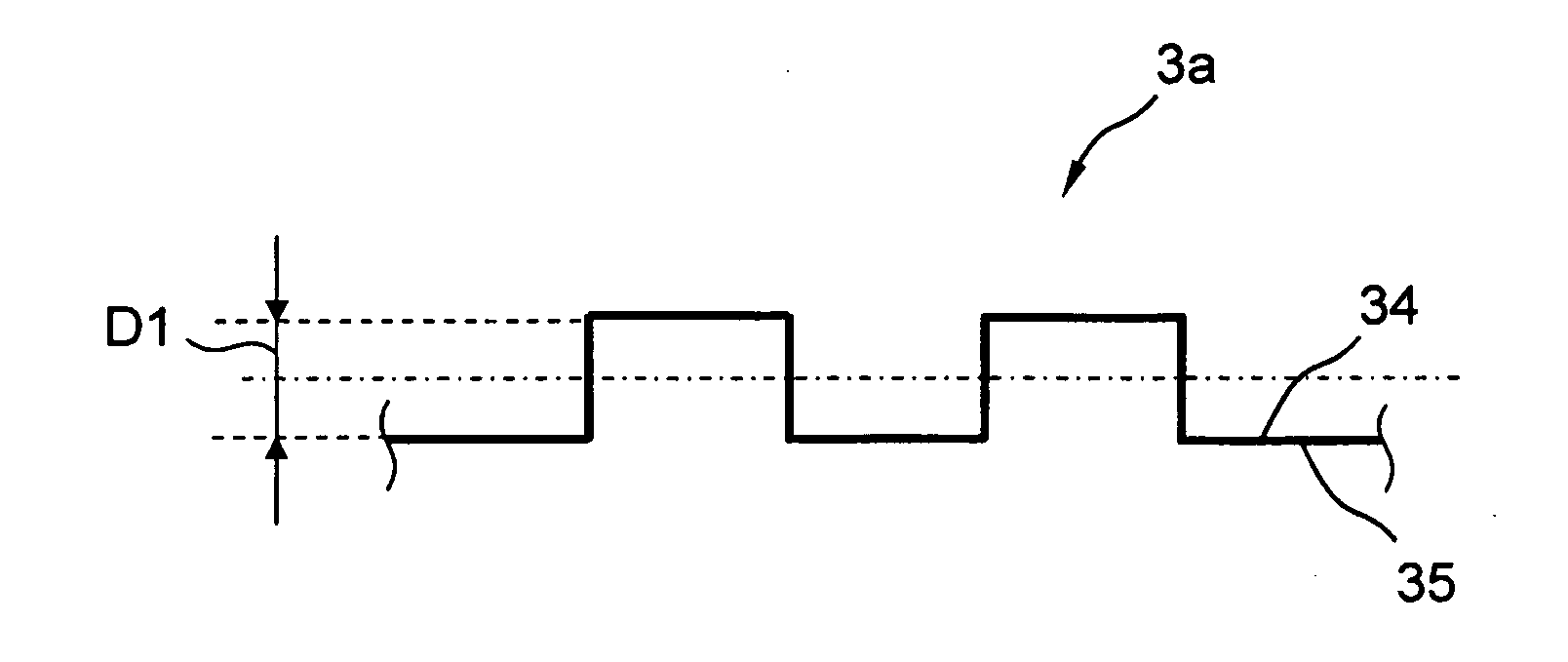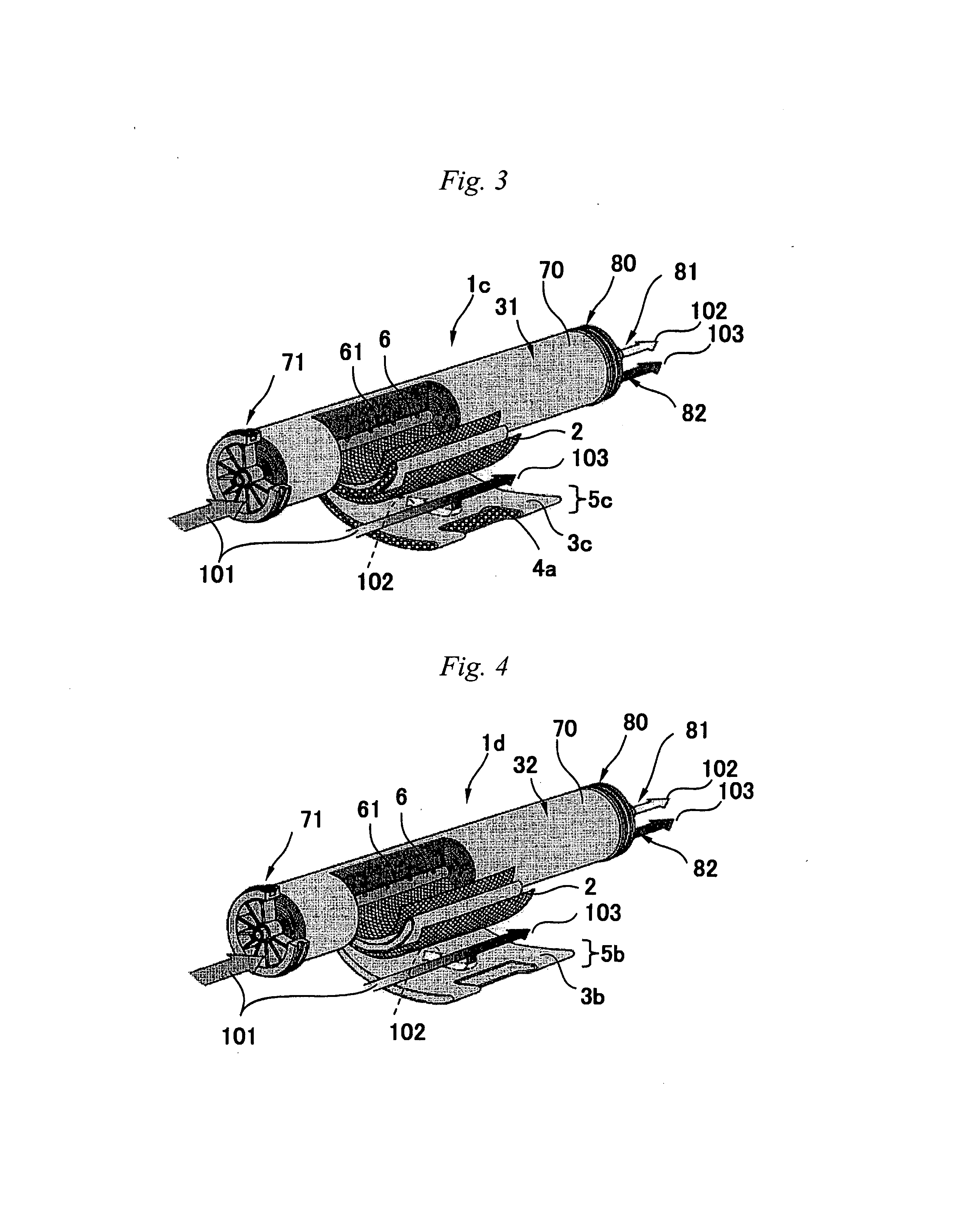Separation membrane, separation membrane element, and method for producing separation membrane
a separation membrane and element technology, applied in the direction of membranes, filtration separation, separation processes, etc., can solve the problems of insufficient flow resistance-reducing effect on both feed side and permeate side, and insufficient flow resistance-reducing effect, etc., to achieve excellent chemical resistance to acidity, high efficiency, and stable flow
- Summary
- Abstract
- Description
- Claims
- Application Information
AI Technical Summary
Benefits of technology
Problems solved by technology
Method used
Image
Examples
first embodiment
1. First Embodiment
[0178]As shown in FIG. 1, the spiral-type separation membrane element 1a separates the raw fluid 101 into a permeated fluid 102 and a concentrated fluid 103. The separation membrane element 1a comprises a perforated water-collecting tube 6, a separation membrane 3b, a first end plate 71, a second end plate 80 and a filament winding 70.
[0179]The perforated water-collecting tube 6 is a tube that is hollow inside it, and its surface has a large number of pores each communicating with the inside. As the material of the tube, usable are various materials including hard plastics such as PVC, ABS, etc., or metals such as stainless, etc. The number of the perforated water-collecting tube to be arranged in one separation membrane element is basically 1 (one). As described below, the permeated fluid 102 that has passed through the separation membrane is collected by the perforated water-collecting tube 6.
[0180]The separation membrane 3b is arranged to surround the perforate...
second embodiment
2. Second Embodiment
[0190]In the following, the members that have been already described with reference to FIG. 1 are given the same reference numerals or signs and their description is omitted here.
[0191]As shown in FIG. 2, the separation membrane element 1b of this embodiment has the same configuration as that of the separation membrane element 1a of the first embodiment except that this has neither a net nor a tricot as the passage members. Specifically, the wound body 30 of the separation membrane element 1b is provided with neither the net 2 nor the tricot 4 shown in FIG. 1, but has only the surrounding envelope-like membrane 5b.
third embodiment
3. Third Embodiment
[0192]For producing the intended separation membrane element, the permeated passage member is changed to a forming component to produce the element; and the separation membrane element is given running water under pressure to thereby prepare the membrane have concavoconvex parts. A specific configuration is described with reference to FIG. 3.
[0193]As shown in FIG. 3, the separation membrane element 1c of this embodiment has the same configuration as that of the conventional spiral-type separation element 1a shown in FIG. 1, except that it has a forming component 4a in place of the tricot 4.
[0194]Specifically, in the wound body 31 of the separation membrane element 1c, concavoconvex parts need not to be formed in the separation membrane 3c before fluid application. The forming component 4a is arranged on the permeate-side surface of the separation membrane 3c in the wound body 31.
[0195]The raw fluid 101 is applied under pressure to the separation membrane element 1...
PUM
| Property | Measurement | Unit |
|---|---|---|
| height | aaaaa | aaaaa |
| temperature | aaaaa | aaaaa |
| depth | aaaaa | aaaaa |
Abstract
Description
Claims
Application Information
 Login to View More
Login to View More - R&D
- Intellectual Property
- Life Sciences
- Materials
- Tech Scout
- Unparalleled Data Quality
- Higher Quality Content
- 60% Fewer Hallucinations
Browse by: Latest US Patents, China's latest patents, Technical Efficacy Thesaurus, Application Domain, Technology Topic, Popular Technical Reports.
© 2025 PatSnap. All rights reserved.Legal|Privacy policy|Modern Slavery Act Transparency Statement|Sitemap|About US| Contact US: help@patsnap.com



